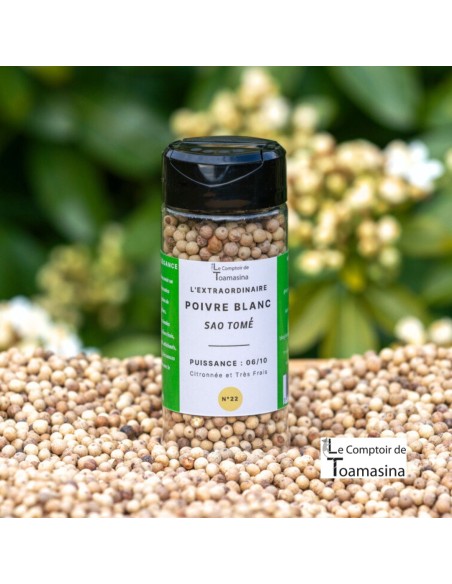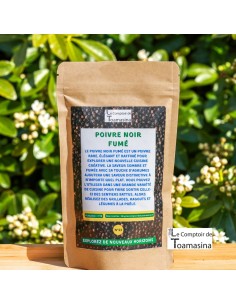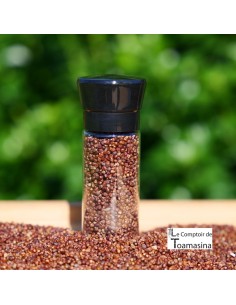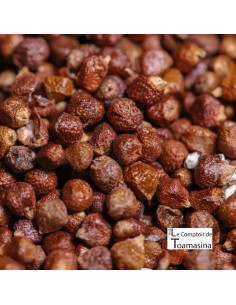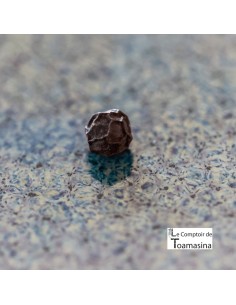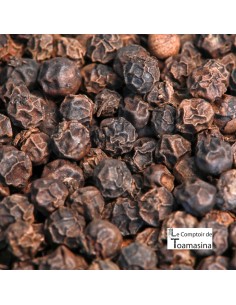São Tomé white pepper, heir to a captivating history, finds its origins on the eponymous island, discovered in 1470 by Portuguese navigators who gave it the name Saint Thomas. This island, cradle of this prized spice, saw the rise of its culture from the beginning of the 20th century, mainly through modest family farms and cooperatives, thus preserving its artisanal character and the remarkable quality of its white pepper.
The careful harvesting of white pepper is done by hand, when the berries reach full maturity. A delicate treatment immediately follows: a brief scalding to remove the pericarp, followed by drying in the sun which fully releases their distinctive aroma. This traditional method, combined with the island's ideal climatic conditions, gives São Tomé white pepper its refined taste and unique characteristics.
Despite modest production, São Tomé and Príncipe pepper remains a valuable product on the global market, symbolizing the agricultural heritage, identity and economic autonomy of the island. Historically, the island has been a center of spice trade, with pepper becoming a symbol of its natural wealth and biodiversity.
Pepper cultivation in São Tomé and Príncipe is closely linked to its Portuguese colonial past and post-colonial development. After independence in 1975, pepper, along with cocoa and coffee, remained a key crop for the local economy, contributing to the livelihood of rural communities and for export.
Additionally, pepper has cultural significance as a quality, organic export product, embodying the island's commitment to sustainable and ethical agricultural practices. The organic pepper and vanilla export cooperative of São Tomé and Príncipe (CEPIBA) plays a crucial role in the economic development and professionalization of organic sectors, thus improving the living conditions of small farmers and artisanal fishermen.


